Heading out the door? Read this article on the new Outside+ app available now on iOS devices for members! Download the app.
Do you practice yoga regularly but somehow still feel “stuck” in certain spots? Senior Yoga Medicine teacher Allison Candelaria created this fascia-freeing flow to tune up the whole backside of your body.
The back side of the body takes on a lot of tension. Our postural habits, stress and natural tendency to move mostly in the sagittal plane (forward, specifically) can all be to blame. Sitting, standing, and walking make the external rotators of the hips, hamstrings, and calves tight and weak. Our low backs tend to house discomfort from sitting, over-exaggerating the curve in the lumbar spine (hyperlordosis), and even sinking your weight into one hip while standing. Moving up the body, the rhomboids (the muscles between the shoulder blades and spine) become weak from our tendency to round the upper back. And the upper traps (top of the shoulders and neck) are notorious for holding stress-induced tension. To top it all off, our necks have to work very hard to hold up our heads, so tension can get trapped in the base of the skull and sometimes send referral pain to other areas in the body.
All in all, our back body works really hard to hold us up every day. By focusing on the fascia, this flow can help release these common areas of tension, giving the muscles greater capacity to fire more efficiently. This yoga sequence will tackle one area at a time, releasing the fascia then retraining those released muscles to lengthen and strengthen to the best of their ability. Not only can this flow reduce pain and increase range of motion, but with a consistent practice of the flow, we can teach our muscles how to move efficiently. I recommend using this sequence as needed (daily for more pain or few times a week for less), holding each trigger point area for 30–60 seconds.
See alsoFascia: The Flexibility Factor You’re Probably Missing on the Mat
12 Poses for the Fascia of Your Back Body
YOU WILL NEED Two tennis balls and a block to help target the deeper fascial tissues of the muscles on the back side of the body.
KEEP IN MIND These tissues hold lots of nerve endings. It’s important to recognize a good kind of pain like a dull toothache sensation and to back off if there is an acute injury, sharp pain, shooting pain or numbness. Staying relaxed is helpful while working through the points in this flow. You can soften the insertion areas by placing a blanket or towel between body and balls if needed.
Bridge Pose with support of a block

Setu Bandha Trapezius Release
From a supine position, place tennis balls on either side of the upper trapezius, toward the upper inner corners of the shoulder blades. Align feet hip-width apart and stack knees over ankles. Lift hips to shoulder height to pin down the tennis balls, and place a block under the sacrum for support. On the inhale, lift arms up and overhead and on the exhale, lower arms back down toward the side body. Repeat 5–6 times releasing the upper traps.
See alsoDIY Bodywork: Release Tension with Foam Rollers + More Props
Rhomboid Release

Remove the block from under the hips and slowly lower to lie flat. Move the tennis balls down in between the inner border of the shoulder blades and the spine. On the inhale, open arms to a full T position and on the exhale bring the elbows to cross in front of the chest. Repeat 5–6 times, switching which elbow is on top each time.
See also7 Ways to Upgrade Your Next Massage
Lumbar Release

Continuing with the balls on either side of the spine, move the tennis balls down to the deepest curve of lower back. For more intensity, pull one knee in toward the chest holding onto the shin and then switch sides. Option to take both knees into the chest holding onto the shins for the most intense variation. Hold the compression for about 60 seconds.
See alsoHow Bodywork Can Transform Your Practice
Cobra Pose
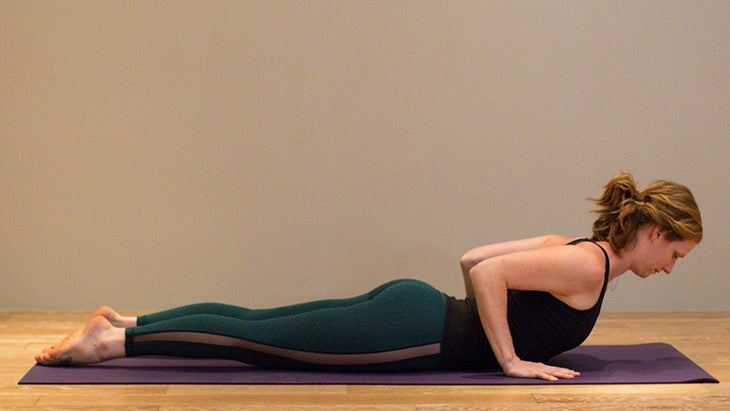
Bhujangasana
From a prone position, ground into the top of the feet and zip up the lower abdomen while pressing hands down to lift head and chest off of the floor. Draw shoulders down the back and relax through the glutes. Stay for a breath and repeat 3–4 times.
See also Open-Your-Hips Flow Video
Child’s Pose

Balasana
Draw big toes to touch with knees either together or apart and sit hips back to heels while extending spine and arms forward to allow the tissues on the back of the body to re-lengthen and hydrate here. Stay for about a minute or a few slow deep breaths.
See also Ease Lower Back + Shoulder Tension with Fascial Work
Crescent Lunge with Eagle Arms

Slowly come back up to standing and come into Crescent pose. Draw tailbone down while hugging in around the waist and stacking shoulders over hips. Draw one elbow on top of the other for Eagle arms and lift the elbows away from the chest, forearms away from the forehead and shoulder blades down the back. Stay for 3–5 breaths then repeat with opposite leg in front and opposite arm on top.
See alsoHappiness Toolkit: Belly Breathing Meditation to Build Boundaries
External Rotators Release
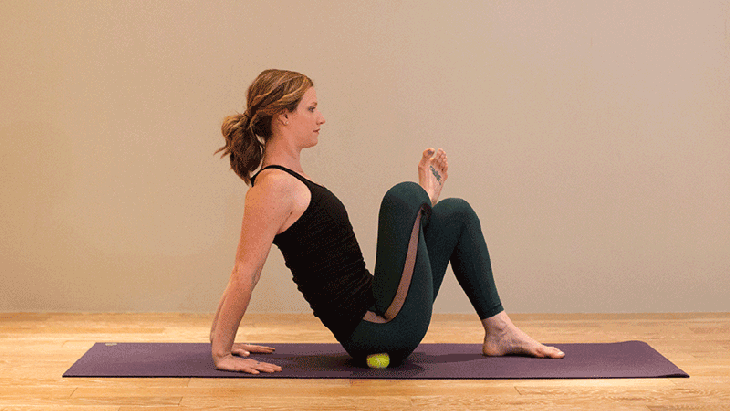
From a seated position cross one leg over into figure four. Lift your hips and place one tennis ball under the center of the glutes on the lifted leg side and then lower your hips on top of the tennis ball. You can stay here and relax, or for more intensity, begin gently rolling around a small area releasing tension in the back of the hips. Continue for about 30–60 seconds then repeat on the second side.
See alsoEase Low Back Pain: 3 Subtle Ways To Stabilize the Sacrum
Warrior II
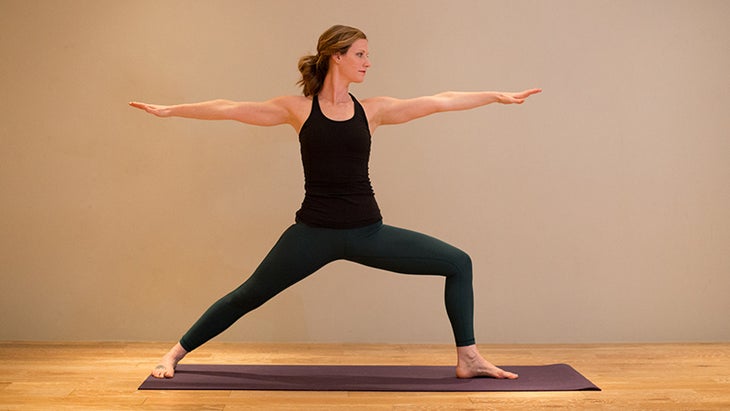
Virabhadrasana B
Align front heel with back arch, stacking front knee over ankle and front toes pointing straight forward. Open hips toward the side of the mat as the tailbone lengthens and the ribs knit back to stack the shoulders over the waist. On the inhale, straighten both legs and as you exhale lower down into your Warrior II pose. Repeat this movement with the breath for 3–5 cycles.
See alsoAnatomy 101: Understand Your Pectoralis Minor
Standing Pigeon
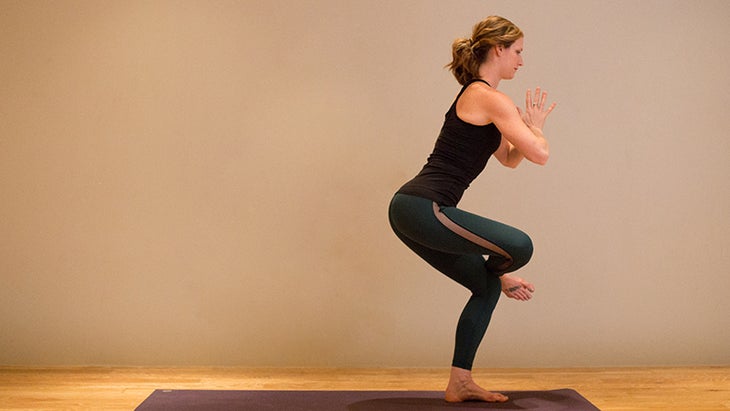
From Warrior II, step to the top of your mat and draw the back leg into the chest, standing up tall at the top of the mat. Place your ankle on top of the standing leg knee and lean the weight back into your heel. Hug in around the waist, lift the chest and breath deeply for 3-5 breaths. Repeat Virabhadrasana B and Standing Pigeon on the opposite side.
See also 3 Ways to Make Pigeon Pose Feel Better
Back-Line Leg Release
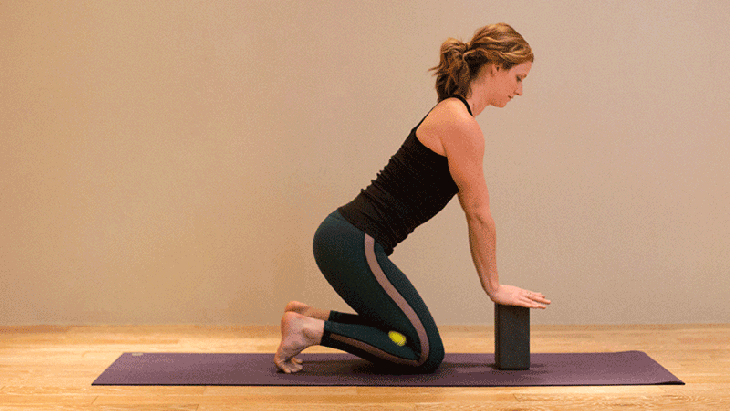
From a kneeling position begin by tucking the toes underneath you then slide each tennis ball between the upper calf and lower hamstrings. Carefully lean the weight back to sit, placing blocks under the hands to support the upper body and maintain a long back. Stay and breathe for 30–60 seconds. Lift up by pressing into the blocks then move tennis balls down to the mid-calf and mid-hamstrings, sit back again for 30–60 seconds.
See also Prenatal Yoga: 5 Psoas-Releasing Poses to Relieve Low Back Pain
Reclined Hand-to-Big-Toe Pose
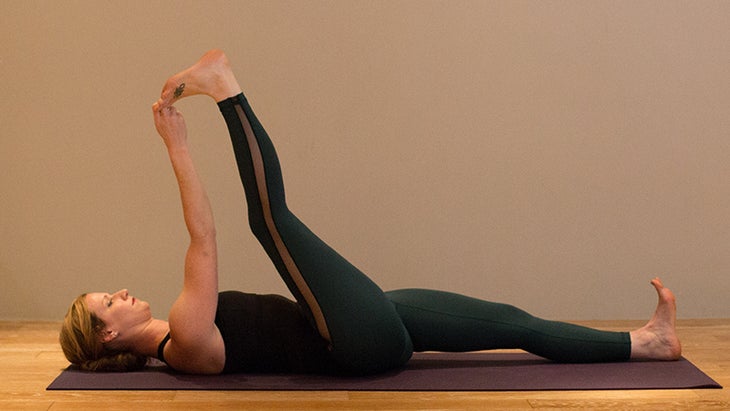
Supta Padangustasana
Coming to a supine position, lift the leg and grab behind the hamstrings, calf or foot, whichever is accessible while being able to relax head and hips on the floor. Use a strap or towel if needed and relax here noticing the changes of the tissues on the back of the leg. Stay for 1–2 minutes and then repeat on the second side.
See alsoA Yoga Sequence to Target Sources of Back Pain
Savasana Occiput Release
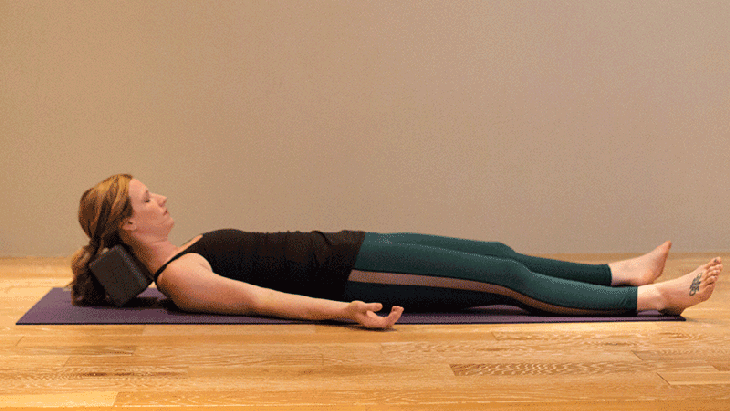
Place the block at a 45-degree angle with the edge of the block positioned at the base of the skull. Close the eyes and begin by resting the weight of the head into the block. Without lifting the head, turn your face about halfway to the right side until you find a tight ropey muscle. Rest the weight of the head into the block for 60 seconds as you try to relax the neck muscles here. Slowly bring the chin back to center and repeat on the second side.
See alsoA Core-Awakening Sun Salutation for Lower Back Support
ABOUT OUR EXPERT
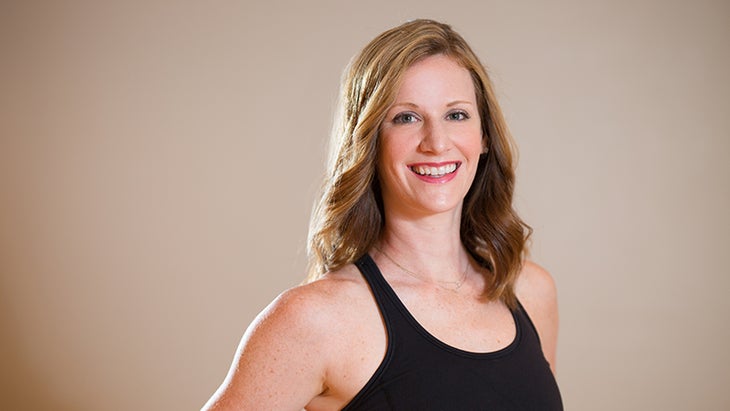
Allison Candelaria is a senior Yoga Medicine teacher and the owner of Soul Yoga studio in Oklahoma City, where she resides with her husband and two children. For Allison yoga was a perfect transition from her previous dancing career and complement to her professional work in the nonprofit sector. Her vinyasa flow classes are anatomically informed by years of study and uniquely incorporate myofascial release techniques to balance the mind, body and breath. She is currently working on her 1000-hour certification with Yoga Medicine, where she has also had the privilege to be personally mentored by Tiffany Cruikshank herself. You can find Allison leading 200-hour trainings with Yoga Medicine around the world and teaching workshops, classes and privates in the midwest. Learn more on allisoncandelaria.com and soulyogaokc.com.